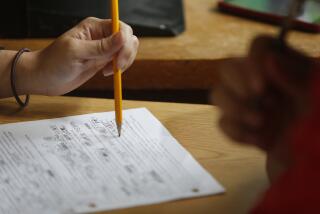Memory Serves as a Link, Not an Instant Replay
In Hawaii, a man awakes after an apparent mugging unable to identify himself, believing that it is 1988 and Ronald Reagan is president. The news reports describe how he gradually recalled his name, Social Security number, hometown and college alma mater. But routine checks revealed that none of the information was accurate.
Halfway around the world, families grieve for victims of the TWA Flight 800 crash. Questions from reporters bring forth a flood of vignettes confirming the reality of the deceased through the lives they had lived.
Viewed together, these two seemingly unrelated events contrast memory’s strengths and weaknesses: at times highly elusive and occasionally dead wrong, but still our most useful tool for maintaining our most strongly held beliefs about and cherished ties to the past.
To comprehend the fragile power of human memory, we need to go beyond the myth that memory operates like a movie camera, passively recording the details of our past experience for future viewing. Try to remember the last time you dined in a restaurant or your first day of kindergarten. Do you see yourself in the scene?
For most people, their memory of that first day of kindergarten will include an image of that most important character: ourselves. This is called an observer memory. But a recent visit to a restaurant will likely be remembered from the perspective that we originally viewed the scene.
That we have observer memories at all shows that what we remember is not a literal record of a past event--we cannot have seen ourselves in the event at the time the record was made. But even more telling, experiments have shown that--counterintuitively--when people are instructed to focus on how they felt during a past episode, they tend to recall it from a field perspective. When instructed to focus on the objective circumstances of an event, they tend to report it from the observer perspective. The way we reexperience our pasts depends on our purpose in remembering it. We don’t replay memories; we construct them.
Research in neuroscience has found that memories are not stored in any single location in the brain. Instead, the elements we need to reconstruct the past are scattered in bits and pieces in different parts of the cortex, and we must retrieve and assemble them.
The constructive nature of memory provides clues concerning its fragility. Mounting evidence has shown that we are often vulnerable to confusing the sources of our recollections: whether we heard about an incident on the radio, read about it or learned about it from a friend.
In everyday life, source confusions can lead to disaster, as in the case of an Australian psychologist who was accused of rape when the victim provided police with a nearly exact description of him. Fortunately, the psychologist had an airtight alibi: At the precise moment of the rape he was in the midst of a television interview (ironically, about eyewitness memory). The victim had been watching the show and had confused the source of her memory, linking the psychologist’s clearly recalled appearance with that of the rapist.
Fortunately, in the absence of unusual conditions such as amnesia, source confusions tend to occur mainly at the level of individual incidents. Our recollections of the general contours of our lives--how happy we were as children, the characteristics of parents, siblings, classmates and friends, while not entirely free of subjective biases, are basically accurate.
Families of the TWA Flight 800 victims can count on their memories of their loved ones as true and powerful allies in their attempts to deal with their loss.
Memory’s usefulness does not lie in its ability to replay the details of our lives with total accuracy, but in its power to recreate and sustain the important emotional experiences of our lives. As such, its power can be a useful survival tool, maintaining a strong link between the lives we have lived and the persons we are now.






